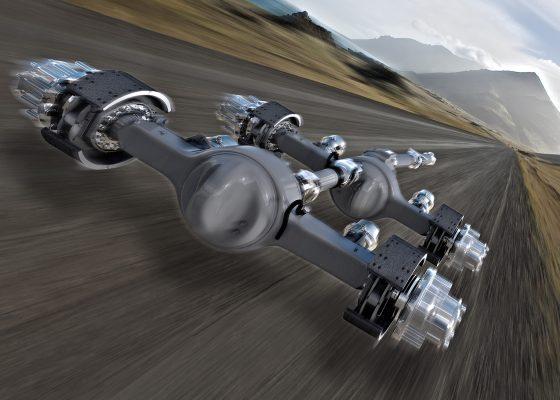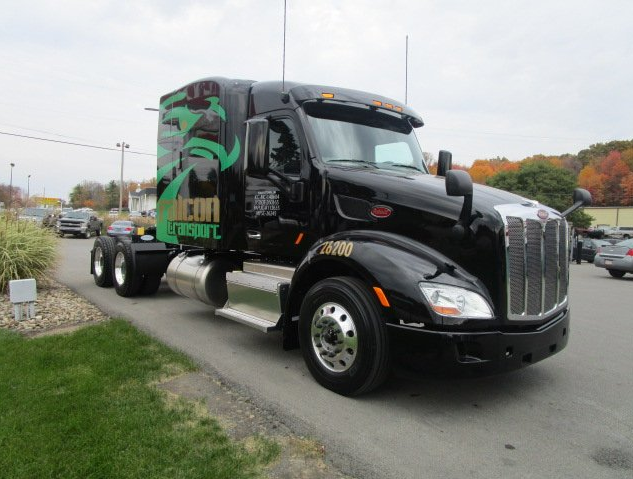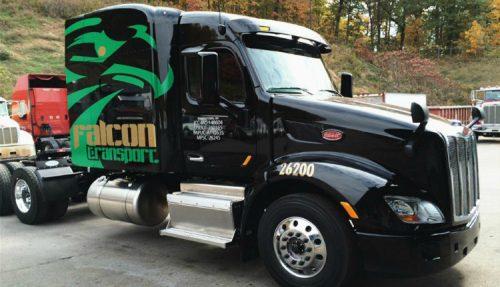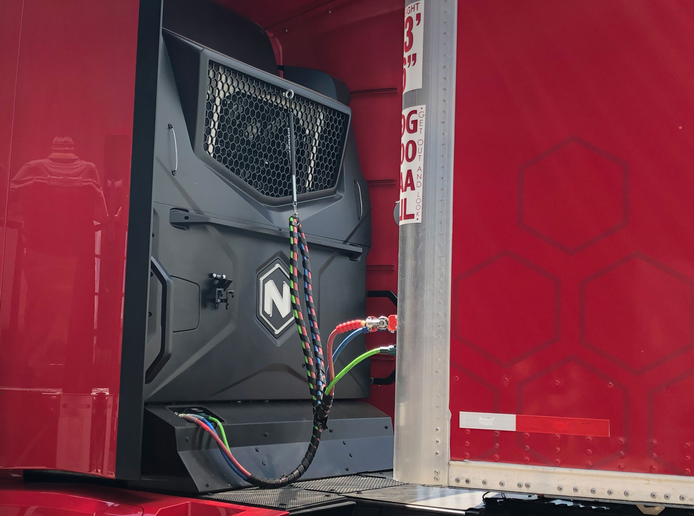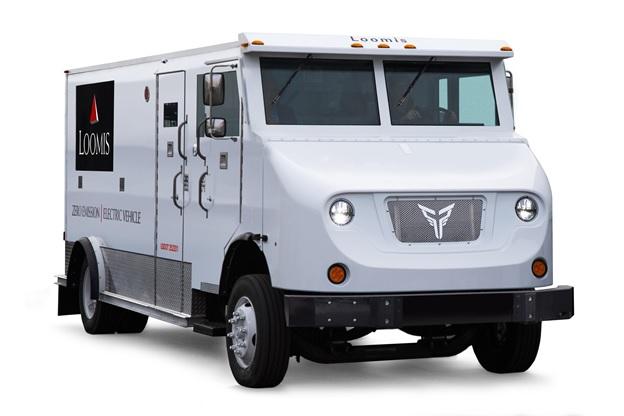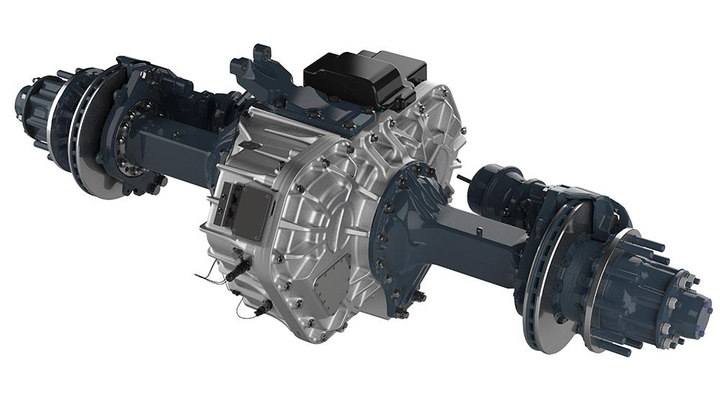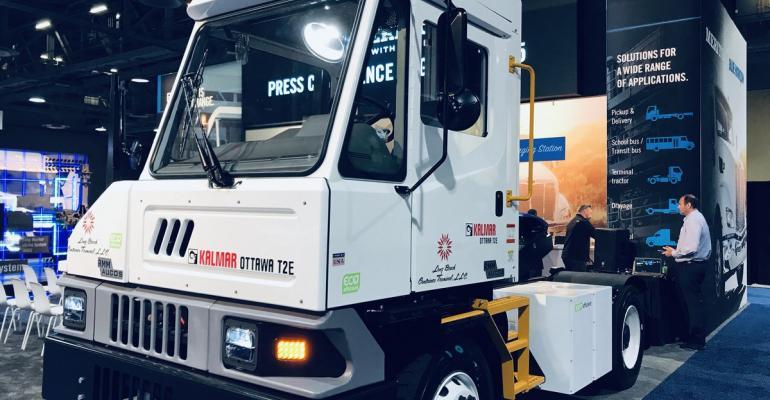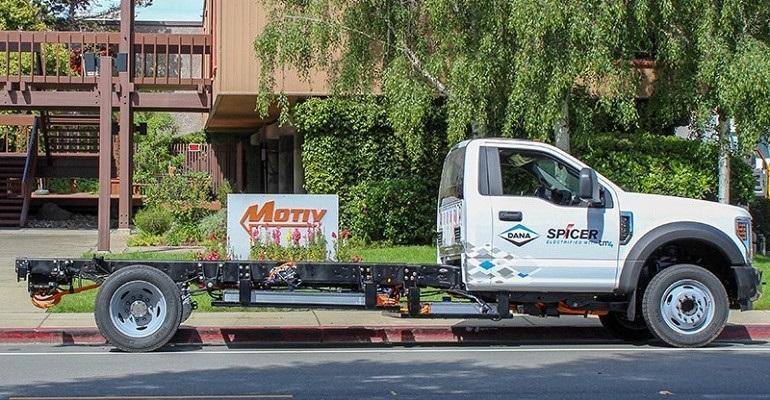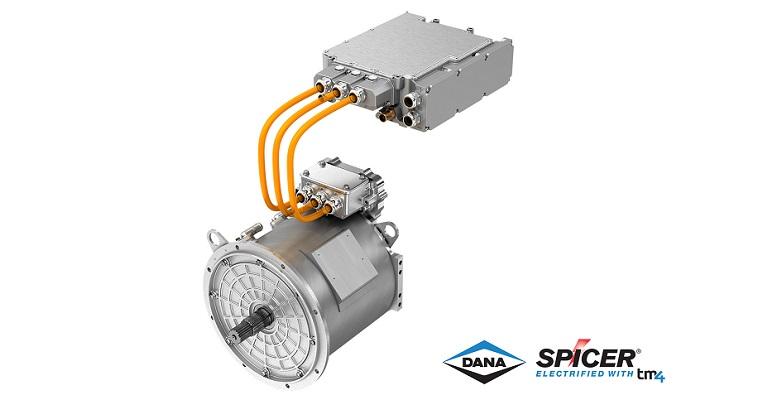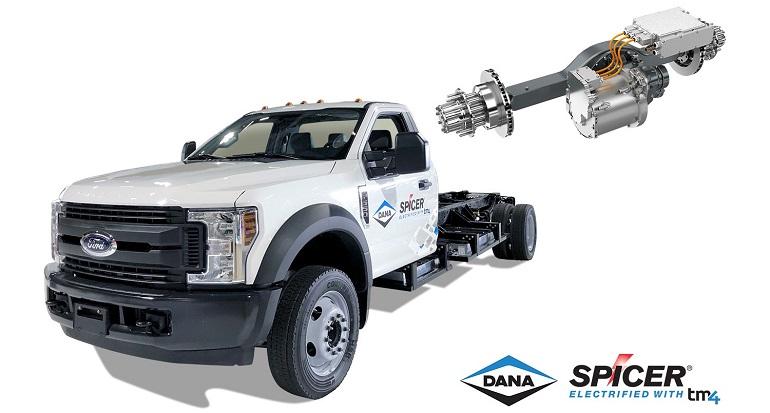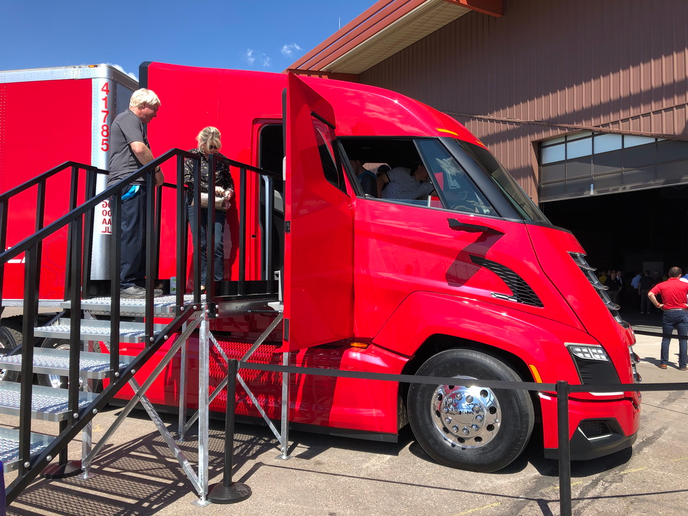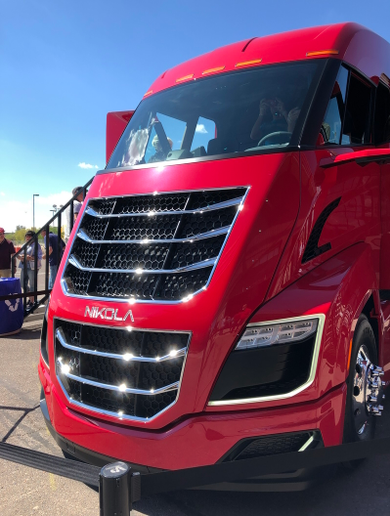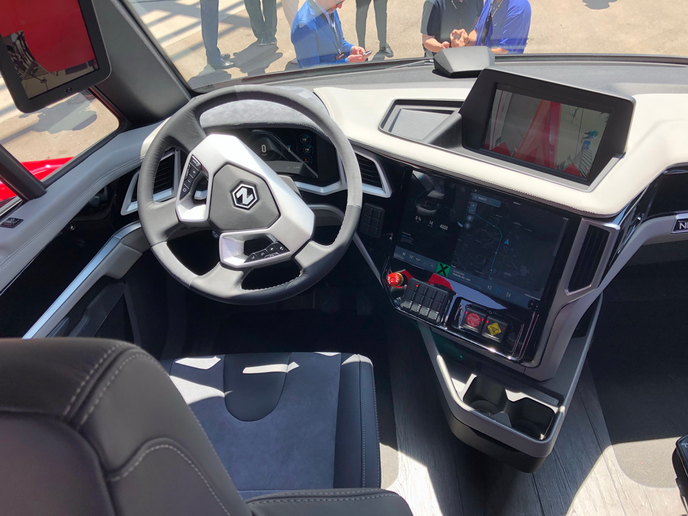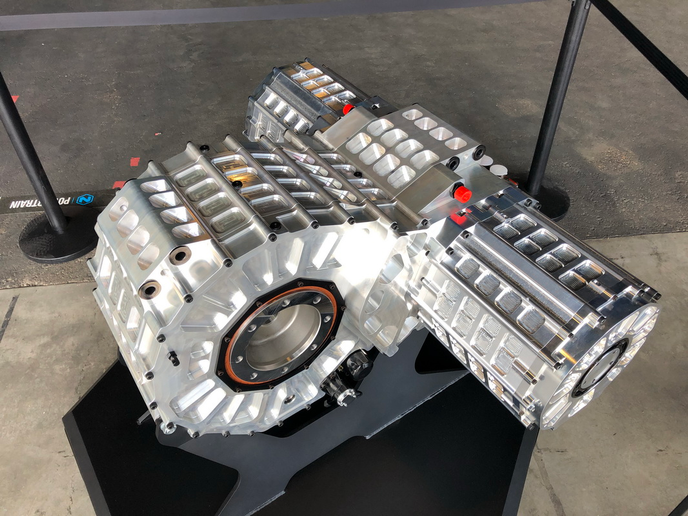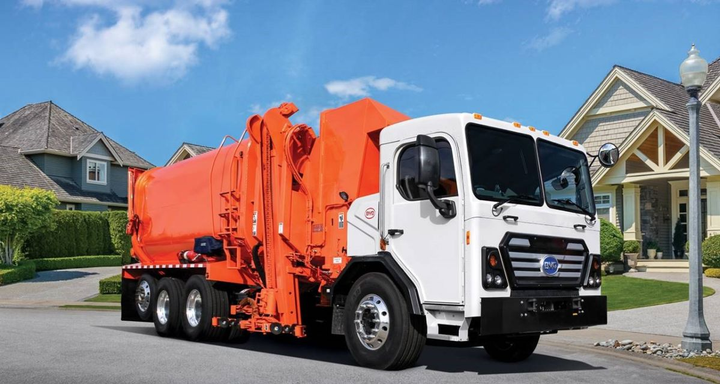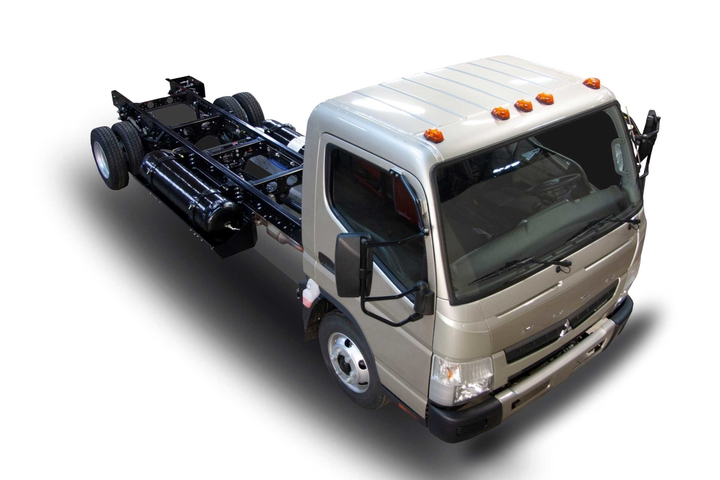
kscarbel2
Moderator-
Posts
18,855 -
Joined
-
Days Won
114
Content Type
Profiles
Forums
Gallery
Events
Blogs
BMT Wiki
Collections
Store
Everything posted by kscarbel2
-
GM doubles Q1 net income; operating profit falls Michael Wayland, Automotive News / April 30, 2019 DETROIT — General Motors' first-quarter net income doubled from a year earlier, though operating profit fell 11 percent primarily due to headwinds in China and downtime at the company's full-size SUV plant in Texas. GM on Tuesday reported net income of $2.15 billion, up from $1.04 billion in the first quarter of 2018. Its adjusted earnings before interest and taxes dropped $300 million to $2.3 billion, as revenue declined 3.4 percent to $34.9 billion. GM's adjusted earnings per share of $1.41, a key estimate for financial analysts, topped Wall Street estimates averaging $1.10. That includes a 31-cent revaluation from GM's stakes in Lyft Inc. and PSA Group. GM’s first-quarter earnings last year were hampered by two factors — downtime in full-size pickup production and a restructuring in Korea — that are now paying dividends. The ongoing launch of its redesigned full-size pickups and the restructuring actions begun last fall helped GM offset headwinds in China and a 23,000-unit loss of full-size SUV production in the first quarter of this year, GM CFO Dhivya Suryadevara said. “This was per plan and it’s setting us up well as we look at the other three quarters of the year,” she told reporters Tuesday morning, adding that the company has completed its downtime at the SUV plant in Arlington, Texas. The automaker's global deliveries in the first quarter slipped 10 percent from a year ago to 1.9 million, including a 17 percent decrease in China and 7 percent slide in the U.S. Suryadevara said GM still expects strong results for the year, including adjusted earnings of $6.50 to $7 a share and adjusted automotive free cash flow of $4.5 billion to $6 billion. Those forecasts are among the reasons why many analysts remain bullish on GM, compared with Ford Motor Co. and Fiat Chrysler. Expected to offset headwinds this year are improvements in full-size pickup production, the launch of GM's redesigned heavy-duty pickups and an influx of new products toward the end of the year — particularly in China, where GM plans to introduce more than 20 new and updated models in 2019. “We have a track record of delivering on our commitments, despite the industry macro challenges,” GM CEO Mary Barra said during a conference call. “As we move forward, we’re going to continue to seize every opportunity to manage what is in our control.” GM will take some downtime for its heavy-duty pickups for retooling in the second quarter, Suryadevara said. It expects production to be flat compared to last year, when it also scheduled downtime at its heavy-duty pickup plant in Flint, Mich. GM’s announced restructuring last year, which included plant idling and salaried workforce reductions, contributed about $400 million to the automaker’s first-quarter bottom line. Suryadevara said those actions remain on track to save $4.5 billion by the end of next year, including $2 billion to $2.5 in 2019. North America profit down North American earnings decreased 15 percent to $1.9 billion in the first quarter, with an adjusted margin of 6.9 percent. Profit from the company's international operations plunged 84 percent to $31 million. GM Financial earned a $359 million profit, down 19 percent from $443 million a year earlier. That decline, Suryadevara said, was due to positive one-time benefits in the first quarter of 2018. Adjusted earnings for GM Financial, she said, are expected to be flat overall for the year. The automaker spent $200 million on its Cruise autonomous vehicle operations in the first quarter. GM said it expects to spend $1 billion on GM Cruise for the year. GM shares fell 2.5 percent to $39.01 in midday trading.
-
Ram engine supplier Cummins will probe emissions certifications Bloomberg / April 30, 2019 Cummins Inc., a key supplier of engines for Fiat Chrysler's Ram pickups, has started a review of how it certifies the emissions of engines it supplies to the carmaker. Cummins will check certification and compliance processes for engines in the 2019 Ram 2500 and 3500 trucks after conversations with the U.S. Environmental Protection Agency and the California Air Resources Board (CARB), the company said in a statement posted Monday. “We are reviewing our certification process and it’s too early to tell what, if any actions, would or might be needed,” Jon Mills, a Cummins spokesman, said in an email. Fiat Chrysler Automobiles said it welcomed the review and said it would cooperate as necessary, adding the discussions are taking place between Cummins and other stakeholders. The carmaker in January agreed to pay about $800 million in fines and costs to settle lawsuits brought by states, car owners and the U.S. Justice Department, which said earlier versions of the company’s diesel-powered pickups and SUVs violated clean-air rules. Last week, the Justice Department opened a criminal investigation into Ford Motor Co.’s emissions certification process, intensifying an issue the automaker disclosed two months ago. Ford is at least the third major automaker to face a U.S. federal investigation over emissions in the span of a few years. Volkswagen Group paid a $4.3 billion penalty in 2017 after installing so-called defeat devices in its diesel engines to bypass emissions tests. FCA debuted revamped versions of its heavy-duty Ram pickups at the Detroit auto show in January and started sales in the second quarter. “We do not comment on ongoing investigations,” the EPA said, without specifying if the agency had started a formal probe of Cummins.
-
Jason Cannon, Overdrive / April 29, 2019 The rapid industrywide adoption of the automated manual transmission has been accompanied by the related trend of downspeeding and lower axle ratios. The slower engine speeds have brought about significant savings in fuel costs and other efficiencies. “Downspeeding is about reducing the amount of trips the piston takes up and down the engine, which reduces friction,” says John Moore, powertrain product marketing manager for Volvo Trucks North America. “This is actually where we’re saving the fuel.” Volvo’s XE13 package that debuted in 2011 reduced rpm at cruise from about 1,370 to about 1,150. Newer iterations of downsped drivelines routinely cruise near 1,050 rpm. Every reduction of 100 rpm is worth about 1.5 percent in reduced fuel consumption. So being able to maintain highway speeds at 1,150 rpm versus 1,370 constitutes a fuel savings of more than 3 percent. A downsped driveline lets the engine operate at its most efficient rpm while also generating the minimal horsepower required to maintain a 65-mph cruise. “There is a combination of factors for the engine fuel efficiency improvements,” says Carlos Pinotti, Meritor’s senior director of rear drivetrain engineering. He cites reduced engine friction due to lower piston speed and reduced heat transfer and flow losses due to lower gas velocities and improved thermodynamic efficiency. “The slower that engine is turning, you’re not running the water pumps, accessory drives and all those things nearly as fast, not to mention fewer cycles per minute,” says Mike Garrison, Eaton application engineer. Reduced heat and friction also lead to less component wear, potentially extending engine life. “An AMT is capable of making shifts at the appropriate time to keep the rpm low,” Garrison says. It takes into account real-time driving factors to optimize the shift strategy and balance performance with fuel economy. Behind the AMT, a taller rear gear ratio lessens engine speed and improves fuel efficiency. Axle ratios have been getting faster with a lower numerical value, Garrison says. “For overdrive transmissions, common axle ratios were in the mid and low 3s,” he says. “Today, with a lot of these linehaul downspeeding specs, it starts with a 2.” Nearly 25 percent of the rear ends Meritor sold in 2011 came with a 3.55 axle ratio. By 2016, that share had dropped to about 5 percent. Across 40,000-pound axle, linehaul and 6×4 applications, a 2.64 ratio has climbed from about a 7 percent order share to about 13 percent in that same timeframe. It’s now the leading ratio among Meritor products. “The axle ratio’s range shiſted toward faster ratios due to downspeeding,” says Pinotti. “By the end of 2016, 2.64 and 2.47 ratios represented 25 percent-plus direct-drive and overdrive transmissions.” A 2.47 ratio was the biggest gainer over those five years, climbing from less than 3 percent to a nearly 10 percent order share. The engine’s output torque has improved, helping to further enable downspeeding by making torque available deeper in the rpm range, Garrison says. That could be an important factor in an owner’s next truck trade. “Whatever ratios you were spec’ing on previous powertrains likely need to change anyway,” says Steve Slesinski, Dana’s director of global product planning for commercial vehicles. “Don’t just say, ‘I’ve always run a 3.55 ratio. I want that in my next truck.’ ” Similar to an aerodynamic package, all the pieces of a downsped driveline have to be chosen carefully to work in unison. Engine downspeeding means a reduced input shaft speed but requiring increased torque to deliver the same power, notes Pinotti. That places increased load demand on the driveshaſt at highway speed and startup. As driveshaſt speed slows down at highway cruise speed, the amount of torque going through the driveshaft and axle system increases, Slesinski says. Tom Bosler, Dana’s global driveshaſt product management leader, says fleets that failed to specify a driveshaft compatible with a downsped driveline have experienced premature U-joint failures. “If you take a truck that was running at 1,450 rpm down to about 1,125, that rpm change of 325 rpm results in a 36 percent change in driveshaft and rear axle life,” he says. Variables in play with downspeeding include engine specification, type of transmission and rear axle ratios. However, much of the heavy lifting lies with the transmission. The integrated driveline allows the system to calculate what Moore calls “perfect shiſt points” based on the truck’s load, road grade and required torque. Soſtware options are flexible for application-specific needs and to promote performance or fuel economy. “A variety of shiſter packages go along with that,” he says. While the transmission’s soſtware is optimized for downspeeding, the unit itself is mostly a stock AMT. “The transmission knows how to hold the gears as long as possible to get the best payback on the fuel efficiency,” Moore says. “We never could downspeed with a manual transmission, because a driver, every time he hit an overpass, would have to downshift to get over the overpass without losing too much speed. The driver would have to continually be shifting.” Downspeeding pays off best in long-haul applications Downspeeding is best suited for truckload over-the-road applications that spend a lot of time in top gear. “A typical stop-and-go application isn’t going to benefit much more from having performance or capability,” says Meritor’s Carlos Pinotti. “You need startability much more than a cruising speed in a downsped range.” Even if you run few on-highway miles or don’t spend long stretches in top gear, meaning you won’t reap downspeeding’s fuel economy benefits, there still are benefits to be had, says Dana’s Steve Slesinski. “You’re running the engine less rpm over its lifetime,” he says. “Fewer revolutions over a period of time should in fact be better for the components.” An engine running at a lower rpm also translates to a quieter cab in almost every application, says John Moore of Volvo Trucks North America. Specifying a downsped setup also can be a tricky proposition for a truck used in varied driving terrain. In that situation, it’s often best to have a more general specification capable of running a mixture of highway, rural and urban routes. Eaton’s Mike Garrison says another challenge is driving speed. While the trend in downspeeding is to look at cruise rpm, the operating road speed can vary significantly from state to state, making it tough to optimize specifications when drivers frequently cross regions. “People really need to understand what speeds they are going to run and how are they going to handle these slower states,” he says. “That really can make a difference in them realizing the kinds of benefits they are looking for.” .
-
Estes Offers $15 Million for New England Motor Freight Assets Heavy Duty Trucking (HDT) / April 29, 2019 Estes Express Lines has bid $15 million to acquire assets the Eastern Freight Ways and Carrier Industries divisions of New England Motor Freight, according to recent reports. The bid is part of NEMF’s chapter 11 bankruptcy proceedings, stemming from the LTL carrier’s decision to file for bankruptcy in early February. A decision on the $15 million bid will be made on May 16. The New Jersey-based company stated that it had recorded losses in consecutive years and the damage was compounded by unsustainable increases to overhead. The company determined that chapter 11 bankruptcy was the best way to maximize the value of its assets for the benefit of its employees and creditor constituencies. For Estes Express, the acquisition would bolster the company’s flatbed truckload business. Estes is based in Richmond, Virginia, employing over 8,100 drivers with 6,700 vehicles and over 27,400 trailers.
-
CityFreighter Introduces Compact Class 4 Electric Truck
kscarbel2 replied to kscarbel2's topic in Trucking News
-
Heavy Duty Trucking (HDT) / April 29, 2019 CityFreighter has introduced its first full electric medium-duty truck, the CF1, which the company says was taken from design to prototype in just 10 months. The Class 4 electric truck features a custom, modular design with compact design and a low load floor for easy of loading and unloading. The truck has a payload capacity of 2.4 tons and a load floor that is just 17 inches high and features an electric air suspension, avoiding the need for an electric lift system. The battery electric drivetrain will have a 100-mile plus driving range with a gross vehicle weight rating of 5 tons. The simple interior features no gauges, with a tablet offering all operation information, and two video screens on the side replacing the mirrors. The truck also features entirely keyless operations. With the prototype CF1 introduced, CityFreight said that it is ready to scale up and will focus on the U.S. as its first commercial market. “We want to show our vision how a commercial vehicle for the last mile should be designed,” said Michael Schoening, president CityFreighter. “Beyond just changing the combustion engine, we believe that we need to focus on delivering intelligent and highly customizable solutions for our customers and their challenging markets." .
-
Drivers Left Stranded After Falcon Transport Stops Operations Heavy Duty Trucking (HDT) / April 29, 2019 Ohio-based Falcon Transport has apparently ceased operations, notifying its drivers over the weekend to stop working because the company was no longer operating, according to a local Ohio Fox affiliate. The message to drivers read: “We regret to inform you that Falcon Transport Co. is not able to continue operations and we will be shutting down effective today. Please stop any work you are doing for the company immediately. You are not expected to return to work. Please be on the lookout for further information we will be sending regarding this situation.” The sudden end to operations may have been partly caused by the closing of a General Motors Assembly plant in Lordstown, Ohio which shut down in March. Falcon hauled vehicles and other products for the nearby plant. Drivers were reportedly left stranded in the field with some drivers finding fuel cards were no longer working and arriving to the fleet’s facilities to find out it was locked and their key cards were deactivated. According to Falcon Transport’s website, the Youngstown-based company has been in operation for over 100 years, hauling for steel mills, automakers and moving commodities for large businesses. .
- 1 reply
-
- 1
-

-
Commercial Carrier Journal (CCJ) / April 29, 2019 In a story echoing that of the high-profile Christmas Eve 2009 closure of mega-fleet Arrow Trucking, the 700-truck operation of Falcon Transport on Friday, April 26 suddenly ceased operations. The Youngstown, Ohio-based fleet deployed text messages and emails to workers that day notifying them of the closure, leaving its drivers stranded without jobs, pay, access to fuel or even a way home, according to accounts posted to Facebook and local news reports. The company sent emails to its nearly 500 drivers Saturday telling them to stop work immediately. The company is also said to have blamed a computer malfunction when drivers did not have their paychecks direct deposited as usual on Friday. In all, 577 people are out of work: 89 office employees, 81 owner-operators and 407 company drivers, according to The Youngstown Vindicator. The Youngstown Business Journal is among numerous media outlets that say Falcon Transport’s Director of Operations Jayson Calhoun sent an email to employees Saturday saying: “We regret to inform you that Falcon Transport Co. is not able to continue operations and will be shutting down effective today. Please stop any work you are doing for the company immediately. You are not expected to return to work. Please be on the lookout for further information we will be sending regarding this information.” Most reports of Falcon’s closing blame it on the shutdown of the General Motors Lordstown Complex early last month. GM built its Cruz sedan at the plant. It was a major customer of Falcon, which had dry van and flatbed operations. Calls to Falcon’s headquarters to received a message saying it was not a working number. .
-
Bosch, Powercell Partner to Bring Fuel Cells to Trucks, Cars
kscarbel2 replied to kscarbel2's topic in Trucking News
Bosch Developing Hydrogen Fuel Cell Technology Heavy Duty Trucking (HDT) / April 29, 2019 German automotive supplier Bosch announced that it is entering the market for mobile fuel cells in an effort to power both trucks and cars with this emerging powertrain technology. Bosch said it has formed an alliance with Powercell Sweden AB, a Swedish manufacturer of fuel-cell stacks, which form the core component in a hydrogen fuel cell and convert the gas into electricity. Under the agreement, the two partners will work jointly to make the polymer-electrolyte membrane (PEM) fuel cell ready for serial production. Bosch will then manufacture this technology under license for the global automotive market. In a press statement, Bosch officials said the company believes the best opportunities for broad adoption of fuel-cell technology are in the commercial-vehicle market. The European Union's fleet requirements for trucks call for a reduction of CO2 emissions by 15% on average by 2025, and 30% by 2030. Bosch’s view is that this target can only be reached by electrifying more and more of the powertrain, with hydrogen fuel cells playing a major role in reaching that goal. Nikola Motor Co. is developing hydrogen fuel cell heavy-duty trucks for both Europe and the U.S., and Bosch was a big part of the recent roll-out of the Nikola Two (for the U.S.) and the Nikola Tre (for Europe) at an event dubbed Nikola World. Once the technology has been proven in heavy commercial vehicles, the company said, it will then increasingly find its way into passenger cars. For this longer-term goal to happen, the cost of fuel-cell systems needs to be progressively reduced, particularly the "stack," which the company identifies as the most expensive component in a hydrogen fuel cell system, accounting for nearly two-thirds of the cost. “Through commercialization and widespread marketing of this technology, Bosch will achieve economies of scale and push down costs,” said Stefan Hartung, member of the Bosch board of management and chairman of its Mobility Solutions business sector. “In the fuel-cell domain, Bosch already has a strong hand, and the alliance with Powercell makes it even stronger. Commercializing technology is one of our strengths. We are now going to take on this task with determination and develop this market.” Costs also have to fall when it comes to hydrogen as a fuel source, Hartung added. Currently, hydrogen is mainly produced for industrial applications, at a per-kilogram price that frequently exceeds five euros, although he noted that production grows, that price should fall. Hartung said the production of hydrogen can be climate-neutral, with various industrial enterprises currently working on perfecting that process. One kilogram of hydrogen contains as much energy as about three liters of diesel. For 100 kilometers, a modern 40-ton truck requires seven to eight kilograms of hydrogen. In addition, Bosch said, there is a small network of more than 60 hydrogen filling stations in Germany, and this number is set to rise. Hydrogen tanks on commercial vehicles can be refilled with highly compressed gas in a matter of minutes. Once a vehicle is fueled, hydrogen in the fuel cell (or fuel-cell stack as an assembly of such cells is called) reacts with oxygen, which creates both electricity and water as a byproduct. This can be used either to recharge a battery in the vehicle or to directly power the electric motor. By flexibly combining two or more stacks, Bosch said, the power requirements of all kinds of vehicles can be covered, from passenger cars to heavy trucks. “Think of a hydrogen fuel cell system like a hybrid powertrain,” Jason Roycht, head of commercial and off-road vehicles for Bosch North America, told HDT executive editor Jim Park at the Nikola Two launch in April. “Ideally, we want to run a truck as much as possible off of the fuel cell. But there are certain situations where the battery can boost the performance of the fuel cell – in a start-up situation, or on a steep grade that requires more energy to get up than the fuel cell can put it. In that case, the stored energy can be used to help provide additional boost to the drivetrain. So in many ways, the battery is sort of like a buffer between the fuel cell and the electric powertrain." Powercell is gradually moving from manual production of fuel cell stacks to ramp-up of a semi-automatic production. Its stacks provide an output of up to 125 kilowatts. Headquartered in Göteborg, Sweden, the company was spun off from the Volvo Group in 2008. It already supplies fuel cells for use as prototypes in trucks and cars. Bosch also has a lot of expertise in fuel-cell technology. The supplier of technology and services sees itself as a systems supplier, and already has a broad portfolio of components for fuel cells in trucks and cars. These include an air compressor with power electronics and a control unit with sensors. . -
Transport Topics / April 29, 2019 Automotive supplier Bosch announced it formed an alliance with Powercell Sweden AB, the Swedish manufacturer of fuel cell stacks. Under the agreement, the partners will work jointly to make the polymer-electrolyte membrane fuel cell ready for production in commercial trucks and cars. The stack — which is nearly 66% of the cost of a fuel cell system — converts hydrogen into electrical energy. Bosch will manufacture this technology under license for the global automotive market. The stack will complement Bosch’s existing portfolio of fuel cell components and is to be launched in 2022 at the latest, according to the Stuttgart, Germany-based company. Bosch estimates that as much as 20% of all electric vehicles worldwide will be powered by fuel cells by 2030, and it stated the best opportunities for broad adoption of fuel cell technology are in the commercial vehicle market, then increasingly in passenger cars. “Through commercialization and widespread marketing of this technology, Bosch will achieve economies of scale and push down costs,” Stefan Hartung, chairman of the Bosch mobility solutions business unit, said in a company statement. The cost of hydrogen also must drop. Currently, the fuel is mainly produced for industrial applications, at a kilogram price that frequently exceeds five euros. One kilogram of hydrogen contains as much energy as about three liters of diesel. For 100 kilometers, a modern 40-ton truck would require seven to eight kilograms of hydrogen, according to the company. As production grows, the price should fall. The European Union’s fleet requirements for trucks call for a reduction of carbon dioxide emissions by 15% on average by 2025 and 30% by 2030. Bosch’s view is that this target can only be reached by electrifying more of the powertrain.
-
It is Asian...Chinese actually. It's the old Hongyan cab, produced by cab manufacturer Qixing. http://www.qixingauto.com/html/products/cabin/
-
Electric Truck Maker Thor Rebrands as Xos Trucks Heavy Duty Trucking (HDT / April 25, 2019 The company formerly known as Thor Trucks announced on April 24 that it has rebranded itself as Xos Trucks. The Los Angeles-based OEM was launched two years ago and lays claim to being “the first electric truck company to show its prototype Class 8 truck, the ET-1, could successfully transport up to 80,000 pounds across 100 miles on a single charge.” The company said Xos is short for exosphere -- the outermost section of the planet’s atmosphere -- and is representative of its “investment in developing cutting edge technologies and mobility solutions that exceed anything on the present market.” “We see Xos as the ‘os’ for fleets— the intersection between energy and software,” said Dakota Semler, CEO and co-founder of the company. “That the name is cheeky, playful, and maybe slightly irreverent doesn’t hurt either.” “Electrification encompasses so much more than just hardware, which gives us ample opportunities to expand in directions we weren’t thinking about in the early days of the company,” said Gio Sordoni, COO and co-founder of Xos. “It’s a super exciting time now as the company continues to evolve and grow, so we couldn’t be happier about this change.” Xos Trucks also announced it has signed an exclusive agreement with cash-handling firm Loomis Armored under the terms of which it will deliver two Class 6 electric armored cars as part of an EV pilot program. Under the agreement, Loomis will evaluate the Xos trucks for 90 days before placing an order for 100 armored vehicles to be used primarily in California. Per Xos Trucks, the agreement “underscores Loomis’ commitment to sustainability and Xos’ commitment to helping to electrify fleet vehicles where EV technology can easily integrate into vehicles used for local, predictable routes.” .
-
Heavy Duty Trucking (HDT) / April 25, 2019 Allison Transmission has unveiled an electrified e-axle system for medium-and heavy-duty trucks, a fully integrated electric powertrain system designed to fit inside a standard frame along the axles of commercial trucks. The AXE Series features electric motors, a 2-speed gearbox, oil coolers and pumps. The offering also includes power electronics for a complete powertrain solution. Allison officials said it is “the first e-axle in the heavy-duty truck industry to provide this level of power density, size and simplicity,” said David S. Graziosi, Allison Transmission president and CEO. The unveiling came just a day after Allison announced it was acquiring the electric vehicle systems division of AxleTech of Troy, Michigan, and in fact the products were developed by AxleTech. In March, AxleTech talked to reporters about its work focusing on commercial vehicle electrification. The Allison AXE Series has a 1-million-mile design life for medium- and heavy-duty trucks. The system integrates one or two high-speed electric motors and a multi-speed transmission, eliminating the need for additional driveshafts and support structures. A dual-motor axle has a continuous power of 536 hp (400 kilowatts) and peak output power of 738 hp (550 kilowatts). A tandem axle configuration is also available. The system can handle 100% torque in regenerative braking. The complete integration of the AXE Series delivers increased efficiency and continuous power through superior internal cooling. The AXE Series electric powertrain will be integrated in Peterbilt’s Model 579EV electric Class 8 truck for evaluation and testing. As a result, the truck features 1,475 hp (1,100 kilowatts). The AXE Series is available in single and dual motor options to package the entire electric powertrain inside a standard frame that exists in almost every global commercial truck, including refuse trucks, school buses, and drayage and delivery trucks. This allows the e-axle to be a bolt-in solution by design, for efficiency in the installation process. Allison also unveiled a compact electric propulsion solution for low-floor bus applications. It said the ABE Series is the first e-axle advanced ultra-low floor electric bus powertrain system in the market. .
-
Neil Abt, Fleet Owner, Fleet Owner / April 25, 2019 LONG BEACH, CA. Meritor Inc. will begin delivering an improved electric axle to customers this summer. The third-generation 14Xe all-electric axle will offer smoother shifting and handling, while also offering more power, said T.J. Reed, vice president, front drivetrain and electrification. During a press conference at the Advanced Clean Transportation (ACT) Expo, Meritor also said it will supply all-electric drivetrain systems for 38 terminal tractors for use at the California ports in Long Beach and Oakland. The tractors uses Meritor axles and brakes, which work in tandem with the electric powertrain developed by TransPower. “This is one of the largest contracts ever awarded for battery electric terminal tractors and it further validates Meritor’s position as a leader in electric drivetrains as we work toward the commercialization of battery-electric vehicles,” said Reed. The companies were awarded the $17.1 million contract with SSA Marine through the Zero and Near Zero Emission Freight Facility (ZANZEFF) program created by the California Air Resources Board. Deliveries of the vehicles are scheduled to begin later this year through October 2020. They can haul up to 130,000 pounds of cargo. These announcements come one year after Meritor used the 2018 ACT Expo to launch Blue Horizon, a new technology brand representing the company’s emerging platform of advanced technologies centered on electric drivetrain, efficiency and connectivity systems. Chris Villavarayan, president of global truck, said Meritor has more than 20 ongoing electric programs in every major region of the world. Meritor's products were on display throughout ACT Expo, including on electric-powered and natural gas vehicles manufactured by Peterbilt, Daimler and Kalmar. In addition, Meritor developed an exclusive suspension for the Nikola Two electric Class 8 tractor unveiled last week. It was also shown at ACT. .
-
Dana highlights electric powertrain, new partnerships at ACT Expo
kscarbel2 replied to kscarbel2's topic in Trucking News
Dana launches TM4 Sumo electric powertrain for light-duty vehicles Neil Abt, Fleet Owner / April 25, 2019 LONG BEACH, CA. Dana Inc. has launched its newest electric powertrain for Classes 2-6 vehicles, the TM4 Sumo LD. Steve Slesinski, director of global product planning, made the announcement at the Advanced Clean Transportation (ACT) Expo. There are three versions of the powertrain, which offer up to 250 kilowatts of continuous power. The TM4 Sumo can be configured for heavy-duty vehicles when integrated with Dana Spicer electrified axles. Dana acquired a controlling interesting TM4 from Hydro-Québec last year. Slesinski also announced that Dana is partnering with Nordresa to integrate its Spicer Electrified eS9000r e-Axle on the Isuzu N-Series chassis. The axle is designed as a “drop-in” replacement for existing axles used in medium-duty truck and bus applications. It is designed for a range up to 110 miles and peak power of 226 kW for grade startability of 20%. In another new collaboration, Dana and Motiv Power Systems said they are integrating the eS9000r e-Axle on the Ford F-550 chassis. The vehicle can be used for box trucks, maintenance trucks and shuttle buses. “Dana sees tremendous demand in the commercial vehicle space for full electrification, and the Ford F-550 chassis (pictured above) represents an ideal application for integrating our innovative e-Axle technology,” said Mark Wallace, president of Dana Commercial Vehicle Driveline Technologies. -
Trailer-Body Builders / April 25, 2019 Dana showed off its newest direct-drive electric powertrain and revealed new collaborations with Nordresa and Motiv Power Systems during the annual Advanced Clean Transportation (ACT) Expo in Long Beach CA. The company’s TM4 SUMO LD electric powertrain features a motor-inverter combination designed for Class 2 through Class 6 vehicles, Dana said. The offering extends the TM4 SUMO lineup, which it says is powering more than 12,000 electrified vehicles. Designed primarily for today’s direct-drive architectures, the TM4 SUMO LD also provides a modular solution for future transitions to widespread e-Axle platforms. When integrated with one of Dana’s electrified axle solutions, the TM4 SUMO LD can be configured for light-commercial, minibus and medium-duty truck and bus, as well as heavy-duty Class 8 hybrid vehicles, the company claimed. “The TM4 SUMO direct-drive electric powertrain offering is a globally adopted, road-proven, highly efficient solution utilized in thousands of electrified vehicles, which is a key differentiator setting us apart from other electrodynamic solutions,” said Christophe Dominiak, chief technology officer for Dana. “The SUMO LD series has been engineered into multiple Spicer Electrified products and is able to be adapted to the architecture requirements of our customers, from direct-drive solutions to fully integrated e-Axle designs.” With three available models, the TM4 SUMO LD offers up to 250 kilowatts of continuous power and 1,200 newton meters of torque. Its new winding technology, combined with an internal permanent magnet (IPM) rotor design, yields a 10% decrease in magnets and creates a more lightweight and compact solution to fit smaller vehicle envelopes, Dana said. The SUMO LD is matched with the three-phase CO150 inverter, which already is used in “thousands” of vehicles worldwide. Dana, Nordresa electrify Isuzu chassis Dana said it is partnering with Nordresa to integrate its Spicer Electrified eS9000r e-Axle on the Isuzu N-Series chassis for commercial fleet applications. This new collaboration is in addition to the companies’ existing joint efforts to offer commercially available direct-drive systems, complete with TM4 motors and inverters, on battery electric medium-duty vehicle platforms. The progression to fully integrated e-Axles allows the traditional mechanical driveline system to be replaced with an electric motor integrated directly into the vehicle’s differential housing, improving design flexibility for battery placement and truck body positioning, the company maintained. Nordresa’s proprietary electric powertrain controls will be a key feature of the new chassis. “As electrification continues to expand in the commercial-vehicle segment, Dana is focused on cultivating its product offerings to deliver immediate, tangible benefits to our customers,” said Mark Wallace, president of Dana Commercial Vehicle Driveline Technologies. “Collaborating with a leading integrator like Nordresa further supports our customers with complementary technologies that are ideal solutions for the medium-duty and bus markets.” The Spicer Electrified eS9000r e-Axle consists of an integrated motor, transmission and axle system. It is designed as a “drop-in” replacement for existing axles used in medium-duty truck and bus applications. The e-Axle also incorporates an integrated parking mechanism (park pawl) that eliminates the need for an external solution on vehicles without a transmission, Dana said. Developed jointly, the electric Isuzu N-Series chassis can be used for box trucks, maintenance trucks and more. It is designed for a range up to 110 miles and peak power of 226 kilowatts for grade startability of 20%. “We continue to make progress in the development and integration of electrified drivetrains across a diverse set of applications and customers,” said Sylvain Castonguay, president and CEO of Nordresa. “We are pleased to be partnering with Dana, a leader in electrification, to extend those solutions even further as demand continues to grow.” Dana, Motiv electrify Ford chassis Dana Incorporated also is collaborating with Motiv Power Systems to integrate Dana’s Spicer Electrified eS9000r e-Axle on the Ford F-550 chassis for use in commercial fleet applications. By replacing the traditional mechanical driveline with an electric motor integrated directly into the vehicle’s differential housing, the e-Axle provides greater design flexibility for battery placement and truck body attachment, Dana said. In addition to Dana’s e-Axle technology, the chassis features Motiv’s proprietary electric powertrain controls. “Dana sees tremendous demand in the commercial vehicle space for full electrification, and the Ford F-550 chassis represents an ideal application for integrating our innovative e-Axle technology,” Wallace said. “Collaborating with pioneers like Motiv to offer integrated e-solutions enables commercial fleet owners to capitalize on the benefits of electrified vehicles.” Added Matt O’Leary, CEO of Motiv: “We’re proud of our role in this initial Ford F-550 application. It represents a combination of two complementary technologies in bringing electrification to commercial fleets. “We share a common vision with Dana of expanding the market profile of battery electric vehicles in commercial transportation and welcome the opportunity to collaborate with them to advance this goal.” .
-
Tesla Semi Electric Truck Production Pushed to 2020 Heavy Duty Trucking (HDT) / April 26. 2019 During Tesla’s first quarter 2019 earnings call, the company indicated that production of the Tesla Semi would begin in 2020, later than the initial projection of 2019. During the call, Jerome Guillen, president of automotive and head of the Tesla Semi program, indicated that production would begin next year, the first confirmation from the OEM that it had been pushed back. Guillen also confirmed that the Tesla Semi’s powertrains would be built at the company’s Gigafactory in Nevada. Tesla announced the Semi in 2017, and offered $20,000 pre-orders for the battery-electric trucks. The base model, which features a 300-mile range will list for $150,000, while the extended range model, with a 500-mile range, will list for $180,000. Companies that were among the first high-profile fleets to announce orders for the Tesla Semi.include FedEx, PepsiCo, Albertsons, Anheuser-Busch, J.B. Hunt, and Wal-Mart.
-
Ford Q1 net profit falls 34% on one-time charges; shares rise Michael Martinez, Automotive News / April 25, 2019 DETROIT — Ford Motor Co.'s first-quarter net income fell 34 percent to $1.15 billion, on one-time charges, but the company said it was on track to generating better results in 2019 than it did last year as CEO Jim Hackett’s global reorganization starts to take root. Ford’s earnings before interest and taxes in the latest quarter rose 12 percent to $2.45 billion, including a 14 percent gain in North America behind strong sales of trucks and SUVs, in what Hackett has dubbed “a year of action.” Following the release of the company's first-quarter financial results, Ford shares surged above $10 for the first time since August. The shares rose 11 percent to close at $10.41 on Friday. “It was a good start, but we still have three quarters of the year to go,” Ford CFO Bob Shanks told reporters Thursday. “We’re happy, but our enthusiasm is well under control.” The company's North American profit of $2.2 billion reflected a margin of 8.7 percent, 0.9 percentage points higher than in the first quarter of 2018. The results were driven by a stronger mix of more profitable vehicles, including a strong quarter for F series and the North American launch of the Ranger midsize pickup in January. Ford last year announced it was cutting sedans from its lineup. While analysts and investors remain skeptical, Hackett on Thursday said the company “doesn’t intend to lose any of these customers long term” and that the decision “was absolutely the right call.” Shanks said the move, by the end of the year, would contribute positively to the tune of “hundreds of millions of dollars.” Elsewhere in the world, results improved in China, the Middle East and Africa but declined in Europe, South America and the rest of Asia Pacific. Globally, revenue fell 4 percent to $40.3 billion and profit margins declined 1.3 percentage points to 2.8 percent. Ford attributed a majority of its $600 million decline in net income to one-time charges related to its global redesign, including exiting the heavy-truck market in South America and restructuring its operations in Europe. It took a $24 million hit from ongoing layoffs of salaried employees in North America, a process Shanks said is “coming toward its end.” Additional charges in the quarter included an $11 million hit for the closing of its Chariot ride-sharing program and a $67 million charge for ending U.S. production of the Focus. Of the $11 billion in total charges Ford expects to book related to its global restructuring, Shanks said $3 billion to $3.5 billion will occur this year, including the nearly $500 million this quarter. Ford Credit earned an $801 million profit, up 25 percent from a year ago and its best quarterly result since 2010. Shanks said the first quarter will be the strongest of the year as Ford prepares for a slew of new model changeovers, including redesigns of the Escape and Explorer crossovers, later in the year. “It’s the beginning of the game, not game over,” Shanks said. “We feel very encouraged by the start to the year.”
-
Ford facing U.S. criminal probe into emissions testing Bloomberg – Reuters / April 26, 2019 The Justice Department has opened a criminal investigation into Ford’s emissions certification process, the automaker disclosed two months after admitting to an issue with its testing. Ford, the latest automaker to come under scrutiny for adherence to U.S. emissions standards, is fully cooperating with all government agencies, the automaker said Friday in a regulatory filing. The company said that because the matter is still at a preliminary stage, it can’t predict the outcome or assure investors it won’t have a material impact on the company. Ford potentially faces significant financial penalties as regulators have taken a tough line on emissions issues. Ford revealed in February that it had adopted a flawed approach to using road-load specifications to simulate how aerodynamic drag and tire friction can affect fuel economy outside testing labs. It has hired an outside outside law firm, Sidley Austin, and experts to help conduct an investigation that could stretch into the summer. When Ford disclosed the issue in February, the automaker said “there’s been no determination that this affects Ford’s fuel economy labels or emissions certifications.” The Justice Department notified the company of its investigation this month, Kim Pittel, Ford's group vice president of sustainability, environment and safety engineering, said in a statement. The Justice Department refused to comment on the Ford probe. The investigation doesn’t involve the use of so-called “defeat devices” that VW was found to be using to game emissions testing, Pittel said. Ford since last fall has been investigating concerns raised by employees that incorrect calculations were used to translate test results into the mileage and emissions data submitted to regulators. Ford said in February it was evaluating changes to the process it uses to develop fuel economy and emissions figures, “including engineering, technical and governance components.” Ford has held meetings with the California Air Resources Board and EPA officials and turned over documents related to its review. Ford has also submitted a testing plan that has been approved by regulators. The first vehicle Ford is evaluating is the 2019 Ranger pickup truck. The EPA also refused to comment on the Ford investigation but Administrator Andrew Wheeler said earlier this month the agency had other enforcement actions against other automakers "in the works." "When people are not playing by the rules and they are creating more pollution ... we will catch them, we will hold them accountable," Wheeler said. Ford has been embarrassed in the past by errors with fuel economy claims. In 2013, the company cut by seven miles per gallon the claimed fuel economy on the C-Max hybrid following consumer complaints that real-world mileage did not match the claimed fuel economy. In 2014, Ford lowered fuel economy ratings for six other models and offered compensation to customers. The latest probe makes Ford at least the fourth major automaker to fall under ederal investigation over emissions in the span of a few years. Volkswagen Group paid a $4.3 billion penalty in 2017 for misleading regulators and customers about diesel engines emissions. In January, Fiat Chrysler Automobiles agreed to an $800 million civil settlement to resolve claims by the Justice Department and the state of California that it used illegal software to produce false results on diesel-emissions tests. A Justice Department criminal investigation is pending. U.S. regulators are also investigating Daimler for alleged excess emissions in Mercedes-Benz diesel vehicles, but the Justice Department and EPA have declined to comment on the status of the probe. Daimler also has declined to comment, but has previously acknowledged it faces investigations in Germany and the United States. Hyundai Motor Co. and Kia Motors Corp. in 2014 were hit with a $100 million civil penalty after selling roughly 1.2 million vehicles with inflated fuel economy ratings. The inaccurate ratings stemmed from faulty procedures used by the companies to calculate road-load forces.
-
A new Autocar conventional with a “Driver 2” cab supplied by, or produced in conjunction with T-Line?
-
No. Nor China. ZF took most of Eaton’s global market share.
-
What’s Behind the Grille of the New Nikola Hydrogen-Electric Truck Jim Park, Heavy Duty Trucking (HDT) / April 24, 2019 There's nothing ordinary about the Nikola Two, the first Class 8 tractor unveiled by Nikola Motors on April 16. It has 10 tires and disc brakes, but that's where the similarities to existing Class 8 tractors end. Nikola Motor Company CEO Trevor Milton is quick to point out that this truck is not a diesel conversion, but something brand new from the ground up. "We had to build this truck differently, not just to be different, but because we found we couldn't make it work within the framework of existing diesel platforms," he said. "This truck will be competing with diesels and it will have to be better than diesels, so we knew we would have to completely redesign it." The styling cues for the exterior came from Japanese bullet trains, said Steve Jennes, Nikola’s Chief Designer. "When I first started drawing this truck, I wanted a clean, simple profile with an impactful stance," he said. "The early drawings resembled the trains I had ridden on in Europe and Asia when I was younger, where you could travel at 180 mph in complete silence and safety." While Nikola did not provide any numbers or context to back up its claims of aerodynamic superiority, the truck certainly looks slippery enough. Even though the motive power is supplied by zero-emissions hydrogen, energy conservation remains an important consideration, Milton noted. Power comes from hydrogen fuel-cell stacks developed by Nikola in partnership with Bosch that are designed to deliver extended vehicle range. The potential energy stored in the truck's 80 kilograms (176 pounds) of hydrogen yields 3 mega-watt/hours of electricity. Milton said 30,000 pounds of lithium batteries would be required to store the same amount of energy. "By comparison, the current version of the Tesla Semi has 1.2 mW/hr of onboard energy storage," Milton said. "That’s one-third the energy storage we offer, and that's a big weakness when it comes to the distance that truck can travel." Bosch and Nikola also worked in tandem to develop the first true dual-motor commercial-vehicle eAxle for a long-haul truck. The eAxle features Bosch rotors and stators. "We built this truck with 1,000 horsepower per drive axle, that means with a 6x4 configuration it could have up to 2,000 horsepower," Milton said. "We expect about 90% of the fleets in America will order this with just one drive axle. You'll save somewhere around 2,000 pounds by eliminating one set of drive motors and the gearing." Each of the 450 kW motors on the axle(s) produce up to 500 hp and 2,000 lb-ft of torque. "This truck had to be both zero emissions and high performance," said Milton. "If you're just zero emissions but less performance, like the other fuel-cell trucks, nobody will buy them unless they are running out of a port or some other limited area. And on top of that, if the cost of ownership is too high, again, nobody will buy them. This is the only semi that can beat a diesel in every category." Advanced Electronics But the Nikola truck is more than just a fuel cell vehicle; it’s a rolling super computer. One of the key elements of Nikola’s advanced system is the Bosch Vehicle Control Unit, which provides higher computing power for advanced functions while reducing the number of standalone units. "The entire infotainment system is a HTML 5 super computer," Milton said. "That's the standard language for computer programmers around the world, so using it let's us build our own chips. And HTML 5 is very secure. Every component is linked on the data network, all speaking the same language. It's not a bunch of separate systems that somehow still manage to communicate." The VCU will enable future innovations by providing a scalable platform for the highly complex electric/electronic (E/E) architecture needed to support the advanced features of the Nikola truck. According to Bosch, the Nikola family of trucks will be connected with an advanced and secure operating system that provides real-time, over-the-air updates and monitoring. Bosch also provides a camera-based mirror system, co-developed with Mekra Lang, known as the Mirror Cam System. It will replace conventional main and wide-angle mirrors and will provide drivers with a digital side and rear view from the truck cab. Two cameras, fitted left and right in place of traditional mirrors, feed real-time images to high-resolution displays mounted inside the cab. Aside from the aero benefits of dispensing with the large external mirrors, the Mirror Cam system offers enhanced night vision, glare reduction, and several driver assistance features. "This technology is a good fit with what the Nikola teams wants to do with the truck in terms of reducing the drag coefficient of external traditional mirrors and improving safety," said Jason Roycht, vice president of commercial vehicles for Bosch in North America. "Current trucks have multiple mirrors, but with these cameras and software we can stitch images together for enhanced views. We can enhance the image on the screen for increased clarity and we can even add colors to the displays; red for example, to increase the noticeability of possible threat subjects." Fleet operators will be able to digitally manage vehicle keys for the Nikola trucks thanks to the Perfectly Keyless system, also from Bosch. Freight and commercial vehicle rental companies can use a smartphone app to give their drivers access to specific fleet vehicles and to flexibly manage who has access and when. Sensors on the Nikola vehicles will connect with an app on a driver’s smartphone so that when the driver approaches the vehicle, Perfectly Keyless recognizes the smartphone, identifies the unique security key assigned to the driver’s phone, and unlocks the door. As soon as the driver moves away from the truck again, the vehicle is automatically locked securely. Bosch's other significant contribution to the Nikola truck is the Servotwin electrohydraulic steering system. The steering system will enable driver assistance systems that actively support the driver to enhance driving comfort and improve safety. On the Nikola vehicles, the Servotwin will help to enable such features as lane-keeping assistance, side-wind compensation, and traffic jam assist. The system also provides a key building block for the rollout of automated features in the future. Driver Environment When drivers finally get to climb aboard a Nikola truck, they won’t suffer. The demo truck on display at April’s Nikola World event featured a leather and suede interior (they made visitors put on rubber gloves before entering the truck for a tour), rather than the "horrible plastic interiors" they have now, said Jennes. "The idea was to build something so beautiful that drivers will really want to drive it." The truck features independent front suspension, disc brakes, a wrap-around windshield, and doors located behind the seat. A set of steps auto-deploys when the driver approaches the truck and retracts once he or she is on-board. That's keep the DOT guys from hanging off the mirrors during a roadside inspection. The entire dash is electronic, with a 21-inch, 4K display in the middle and a 13-inch display in front of the driver. The truck uses voice-activated controls rather than pushing buttons and reaching for various controls to help maintain a driver's focus on the driving task. And while the truck displayed was the day-cab version, Milton said the Nikola 1 sleeper cab is being developed simultaneously and will go into production at the same time. "It will be identical to the Nikola 2, we just have to extend the back wall," he said. "All the systems and tooling will be exactly the same for both trucks. The sleeper will offer a queen-sized bed, desk, office chairs, and more." .
-
BYD Refuse Truck Delivered to California City Heavy Duty Trucking (HDT) / April 19, 2019 BYD (Build Your Dreams) delivered a BYD 8R Class 8 Automated Side Loader (ASL) all-electric collection truck to Waste Resources to serve its customers in the City of Carson, Calif. This vehicle is the first all-electric refuse truck in residential collection operation in Southern California, according to the manufacturer. The heavy-duty truck features BYD’s propriety electric-propulsion system designed for refuse collection. Waste Resources’ new truck features cab, chassis, and propulsion system built by BYD and an ASL body made by Amrep, a Wastequip company. “Waste Resources is a forward-thinking company that is embracing zero-emission technology for the benefit of the communities it serves,” said John Gerra, BYD director of Business Development, Electric Trucks. “And we’re happy with the great work that Amrep does to help provide our customers with state-of-the-art zero-emission electric trucks.” As the waste industry moves to become increasingly sustainable, zero-emission electric trucks are the future of the industry, according to BYD. In addition to the first BYD 8R recently delivered to Waste Resources, the company has placed orders for three additional units, including another 8R Class 8 and two 6R Class 6 Electric Refuse Trucks. .
-
Heavy Duty Trucking (HDT) / April 24, 2019 Mitsubishi Fuso Truck of America, Inc. unveiled its Fuso FE CNG concept truck on April 24. Powered by compressed natural gas, the truck was developed with alternative fuels system provider Agility Fuel Solutions The OEM said the truck “represents a working collaboration of both companies, potentially providing a more environmentally friendly work truck option for the United States and Canada.” The FE CNG will provide a 15% to 20% reduction in greenhouse gas emissions and more substantial reductions in volatile organic compounds (VOCs), sulfur dioxide (SO2) and nitrogen dioxide (NOx), according to Mitsubishi Fuso. The CNG system on the concept truck is certified to the California Air Resources Board’s optional low NOx standard. Because CNG engines produce essentially no particulates, the aftertreatment system is a simple three-phase catalyst instead of the complex aftertreatment system found on all newer diesel trucks, stated Mitsubishi Fuso. In addition, the truck “produces no smell or smoke and is actually quieter than a diesel-powered truck, ideal for urban operations.” Agility provides CNG cylinders or systems for more than 60,000 trucks and buses worldwide. On the Fuso FE GAS truck, Agility is providing a complete end-to-end CNG fuel system, including dual side-mounted CNG storage systems with 30 gasoline gallon equivalent (GGE) capacity, an integrated regulator assembly and a fuel fill panel, and a CARB- and EPA-certified low-NOx natural gas fuel system for the GM Powertrain V8 6.0L engine that is standard on all FE GAS trucks. Mitsubishi Fuso added that the FE CNG concept truck is estimated to have a driving range of 190 miles. In addition, the CNG fuel system drives the OEM fuel gauge, providing the driver with a familiar fuel level between empty and full, rather than a pressure value, said the OEM. Also, because the CNG system does not significantly increase the weight of the truck, “overall payload capacity for the FE CNG is not greatly impacted, allowing operators to continue to deliver roughly the same amount of goods compared to other powertrain models.” “Using Agility’s experience in CNG will benefit our customers by enabling a reliable, integrated CNG-powered solution for our existing FUSO FE GAS truck models,” said Jasmin Kluge, project manager for alternative fuels project, Mitsubishi Fuso Truck of America, Inc. “The additional benefit is its total cost-of-ownership advantage: lower fuel cost, less maintenance, less emissions and less noise, making this a win-win for truck fleets’ bottom line and environmental stewardship.” “We are excited to work with Fuso to develop a CNG option for the FE GAS platform,” said Brad Garner, Agility’s president – Powertrain Systems. “CNG is an excellent option for return-to-base and urban delivery fleets, with an attractive total cost of ownership.” Mitsubishi Fuso noted that further tests and market studies of the concept truck are under way “to determine the next steps for this product— with a potential CNG aftermarket solution from Agility occurring by 2020.” .
BigMackTrucks.com
BigMackTrucks.com is a support forum for antique, classic and modern Mack Trucks! The forum is owned and maintained by Watt's Truck Center, Inc. an independent, full service Mack dealer. The forums are not affiliated with Mack Trucks, Inc.
Our Vendors and Advertisers
Thank you for your support!


